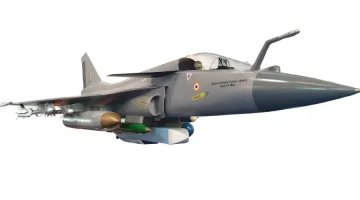- Views: 6K
- Replies: 33

Following the successful launch of the S4* nuclear-powered ballistic missile submarine (SSBN), India is forging ahead with ambitious plans to develop a fleet of even larger and more advanced submarines. The new S5-class SSBNs, designed to be twice the size of their predecessors, represent a significant leap forward in India's naval capabilities and nuclear deterrence strategy.
The S5 submarines, with an estimated submerged displacement of 13,000 tons, will dwarf the existing Arihant-class and S4-class submarines. This increased size will allow for advanced nuclear propulsion systems, enhanced stealth features, and a larger payload of submarine-launched ballistic missiles (SLBMs), significantly bolstering India's second-strike capability.
Initially envisioned as a six-submarine program, the Indian Navy is now likely to procure four S5 SSBNs, built in pairs across two phases. This phased approach allows for efficient resource management and gradual expansion of the fleet.
With the design phase already complete, each submarine is estimated to cost around ₹20,000 crores (approximately $2.4 billion). Given the strategic importance and financial commitment, the program will be directly overseen by the Prime Minister's Office (PMO).
This high-level oversight highlights the critical role the S5 program plays in India's national security strategy, especially in the context of growing geopolitical complexities in the Indo-Pacific region. The PMO's involvement will ensure dedicated funding and strict adherence to project timelines.
To facilitate the construction of these massive submarines, Cochin Shipyard Limited (CSL) is undergoing major infrastructure upgrades, particularly to its dry docks. These upgrades are crucial to accommodate the size and complexity of the S5 submarines.
The S5 program will leverage technological advancements from India's parallel Project-77, which focuses on developing nuclear attack submarines (SSNs). Both programs will utilize a new 190 MW pressurized water reactor (PWR) for propulsion, a significant upgrade from the reactors used in the Arihant-class. Additionally, both submarine classes will feature pump-jet propulsion, a quieter and more efficient system that enhances stealth capabilities.
The S5 SSBNs are a cornerstone of India's nuclear triad, which includes land-based missiles and aircraft-delivered nuclear weapons. This triad ensures a credible second-strike capability, vital for national security. With their extended range and advanced capabilities, the S5 submarines will significantly enhance India's deterrence posture in the face of increasing regional challenges.
By operating silently and securely in the depths of the ocean, the S5 submarines will guarantee India's ability to retaliate in the event of a nuclear attack. This sea-based leg of the nuclear triad is crucial for national security, and the S5 program ensures that India will maintain a robust and reliable second-strike capability for decades to come.

